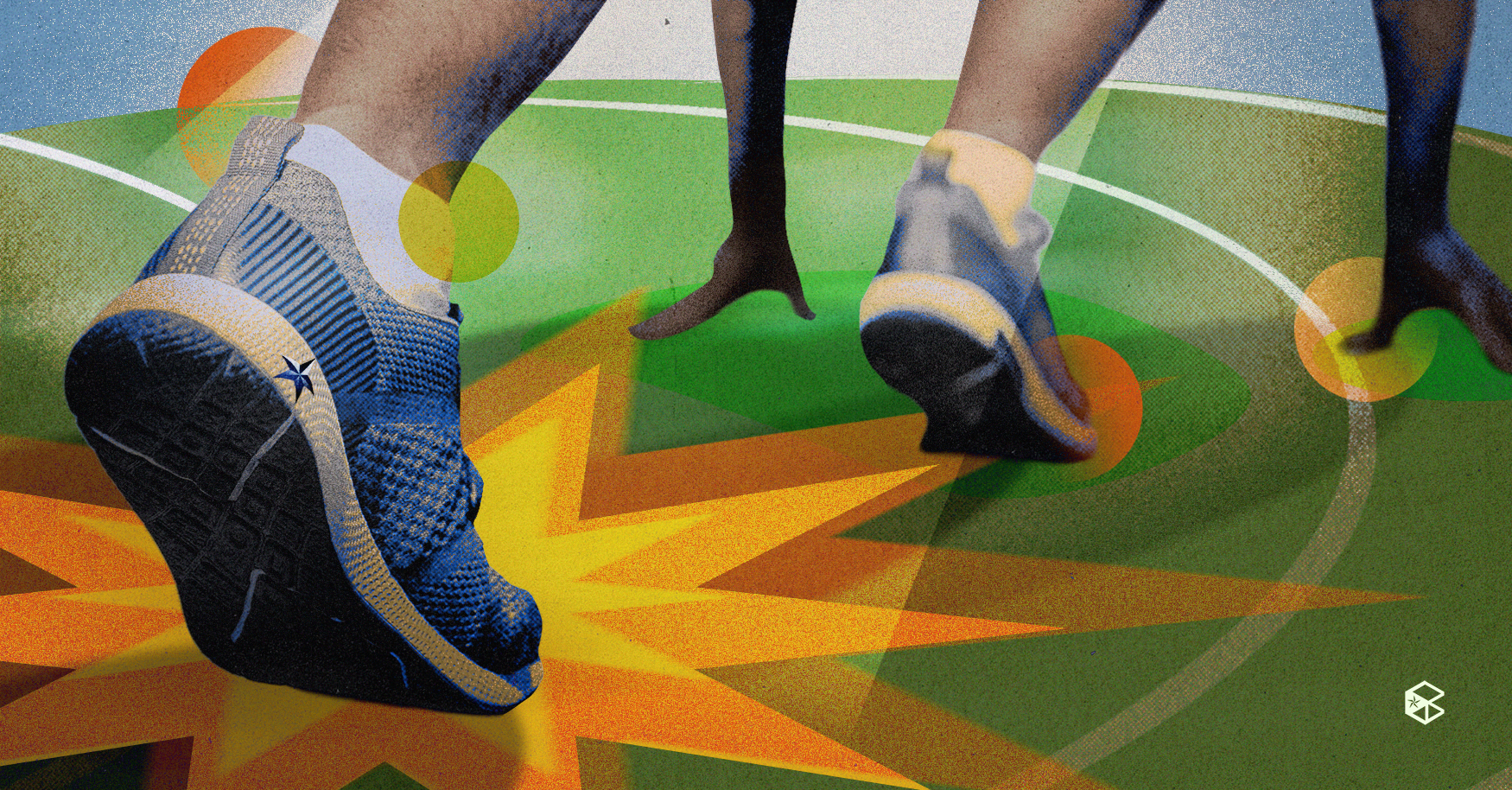Whether you’re running your first 5K or have already logged countless miles on Strava, running remains one of the most accessible sports to participate in. For many Benildeans, the sport has turned into something bigger, transforming it into an activity that deepens their connection with their community and environment.
A running “boom”
The sport has been a hot trend on the internet lately, with people and influencers posting about their recent runs. In a post-pandemic world it comes as no surprise that people have taken up an interest in health, fitness, and community which were heavily restricted then.
Other factors such as viral posts from late 2024 which suggested that Strava (a fitness tracker app) has become the new Tinder, spaces in Metro Manila participating in Car-Free Sundays, and the increase in marathon events have all contributed to the “running boom” in the Philippines.
At first glance, running requires pretty minimal equipment, only asking for comfortable running shoes, attire, a water bottle, and adequate space to run. This allows the sport to exist outside the confines of a gym, or related space, and remain relatively inexpensive and accessible when compared to other sports.
Alongside some technological advancements in the health and fitness category, measuring the results and metrics of running has also become so much easier and tangible especially with fitness tracking apps, smartwatches such as Garmin and the Apple Watch, among others.
Shared runs, shared motivation
In a series of interviews with The Benildean, Benildean runners reveal a deeper understanding of the College’s growing running community.
Everyone’s first run looks a little different but what binds them together is their shared love for the activity, no matter how long they’ve committed to it. For Yasmeen Gaw, an ID123 student taking up the Industrial Design (BS-ID) program, her running journey all began when she “fell victim to a New Year’s resolution,” she shared humorously, “I just wanted to do something active, and running is like the most accessible, because you just need a pair of shoes [...] that's how I started.”
While the ease of getting into running is definitely one aspect that attracts many new runners, it's not the only thing that makes it stand out. Hans Chua, an ID121 student taking up architecture, explains how it was the community aspect of running that really got him to pick it up as a hobby.
He shared how having a group of friends who were into the activity that really allowed him to rethink the way he sees running, “Because you guys are doing something hard together, and the reward after is kind of like an addictive feeling,” he shared.
Having a community also helps with progression, ID122 BS-ID student Jadon Kilayko emphasized, who cited the exchange of experiences and advice among him and his peers as something that helped in his continuous improvement, as well as to incentivize the activity.
Running meets urban design
Other factors like efforts from the private sector to implement “Car-Free days” (such as the Car-Free Sundays in Ayala Avenue) also contribute to encouraging local communities to participate in running, Kilayko said, underscoring the importance of people-centered urban design.
“Running forces you to really be in the moment. It forces you to interact with your environment instead of through windows or phone screens,” ID123 architecture student Mikee Book shared, drawing attention to the state of sidewalks and roads in her interview.
By centering people, not cars, and creating urban features that are accessible and inclusive, the community is not only encouraged to utilize these through activities like running but it also helps to improve the overall quality of life in these urban cities.
“A sign of a good urban plan is you being able to just take your phone in your wallet and access the majority of the things that you need with your feet. It's highlighted in running for sure, because running, you don't bring anything with you,” Chua highlighted.
Similarly, Fritz Reyes, an ID118 Multimedia Arts alumnus, discussed how running and politics intertwine, “The people we chose to vote [for] will be the ones to tell kung saan pwede at hindi pwede tumakbo.” He added how, “Iba [rin] ‘yung feeling na nasa road ka and you have a space safe to [go] to. Di ka matatakot mabangga madapa or ma-injure in general.”
Beyond the trend
When asked what could have contributed to the running trend, Book cited the COVID-19 pandemic as a key player saying, “People really saw the importance of staying active and going out. Running is such an easy way to kickstart physical activity because of the low learning curve and accessibility of it.”
Of course, as with any trend, it's hard to tell if the running boom that the Philippines is experiencing right now is a fleeting thing or something worth investing time, money, and effort into.
“Like all trends, it doesn’t really go away, it fluctuates [...] so I think now it will die down,” Kilayko explained, noting the increase of people on Facebook Marketplace selling their running gear as a key indicator that the running fad is slowly dying down. Despite this, he explained how even if the trend does die down a bit, there will still be a number of runners around.
When asked for his thoughts on a Benilde run club, Kilayko had this to say, “It's good. But I'd prefer if Benilde had more running events, because it's a trend.”
Even if the running trend is slowing down, its lasting impact can already be seen in the way people move, connect, and interact with their urban environment. For Benildean runners, the activity is more than chasing personal bests but finding rhythm and community in motion.
Running, after all, reminds us that progress, whether personal or collective, often begins with a single step.


